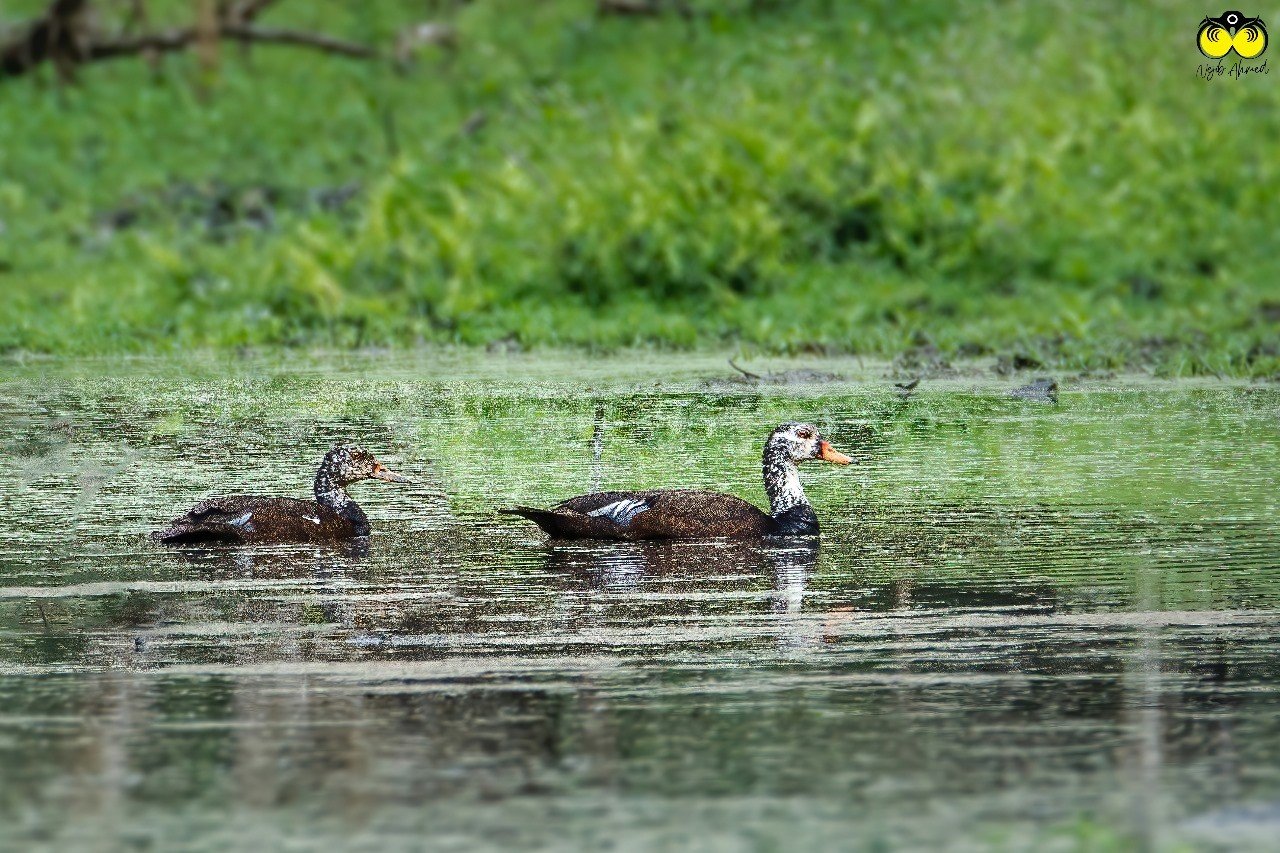India has four biodiversity hotspots. Assam is a part of both the Himalaya and Indo-Burma hotspots, because of which Assam has very unique and rich biodiversity. Out of 1200 species of birds found in India, Assam has more than 800 bird species in its records. Out of 800 bird species found in Assam, some restricted-range and already-threatened bird species are found only in Assam. White-winged Wood Duck or White-winged Duck (Asarcornis scutulata) is a type of species.
The Assamese name of the bird is ‘Deo Hanh’. In Assamese, ‘Deo’ means Ghost and ‘Hanh’ means Duck, meaning Ghost Duck. It is a common question why the name of the bird is Ghost Duck or Deo Hanh. Because of its name, only people are attracted to this species. But there is not any Ghost related to this bird as its name suggests. They get this name because of their call. In earlier times, when people heard their call at dawn and dusk coming from the deep forests, they believed that the call was by a Ghost or Deo. When people came to know that this ghostly call was not made by any ghost but by a duck-like bird, they named it Deo Hanh or Ghost Duck.
We cannot find the White-winged Duck in common wetlands like other birds such as Lesser Whistling Duck, Jacana, Grey-headed Swamphen, etc. They live in undisturbed wetlands of deep Tropical Evergreen Forests. Once found in the entire Southeast Asia region, they are now found only in India, Bangladesh, Myanmar, Thailand, Vietnam, Laos, Cambodia, and in some small pockets of Sumatra. According to estimates made by researchers, only 800 individuals are left in the entire globe, and India has 450 of them. In India, the White-winged Duck is found only in the North-East region.
Download Nagaland Tribune app on Google Play

White-winged Duck is a crepuscular species means they are mostly active during the period of Dawn and Dusk. They feed actively during this time. But if they are not disturbed, they are active the whole day. At noon, they take rest in trees like Hollong (Dipterocarpus retusus), Sam-Kathal (Artocarpus chama,) etc. From a survey done in Bangladesh, it was found that they feed more actively in the morning hours than evening hours. They feed on the seeds and green parts of different aquatic plants, snails, different species of aquatic insects, small fishes, frogs, etc. Generally, they forage in small groups of 2-3 individuals, but sometimes are found in a group of 10-11 individuals.
White-winged Duck is not migratory, but on very few occasions, they move locally in search of suitable habitat. They fly at the height of the canopy with a slow wing beat. They make a nest in the hollow of the tree like Bheh (Salix tetrasperma), Urium (Bischofia javanica), etc. or make a nest with leaves, grasses, roots of water hyacinth at a height of 3-23 meters from the ground. Between April to July, the White-winged Duck lays a clutch of 3-15 eggs at a time. The color of the eggs is white with a faint green tinge.
White-winged Duck has been in the IUCN Red List since 1994, and the current conservation status of the species is Critically Endangered. To raise awareness about the species, the Assam Government declared the White-winged Duck as the State Bird of Assam in 2003. To conserve the habitat of the species Dibru-Saikhowa was declared a National Park,and Dehing-Patkai was declared a Wildlife Sanctuary. But at present White-winged Duck is only found in some pockets of Nameri National Park and Dehing-Patkai National Park. Because of global warming, rainfall and temperature have drastically changed, which impacts the tropical forests, as which the habitat of the White-winged duck is threatened and becomes unsuitable for the species.
A study done by the Govt agency and NGO found that by 2070, 436.61 km of suitable habitat of the species will be lost. Because of global warming, there will be a shift of suitable habitat from East part of the Northeast to the western part of the Northeast. The same study also found that Assam has the highest suitable habitat for the species in the entire Northeast. Therefore, it is very important to take necessary steps to conserve the remaining habitat. To draw a full proof plan for the conservation of the species, Government agencies, NGO’s, Researchers, and Conservation activists should come together so that we can conserve the species from extinction.

Jigyas Boruah
Range Forest Officer, Assam Forest Department

